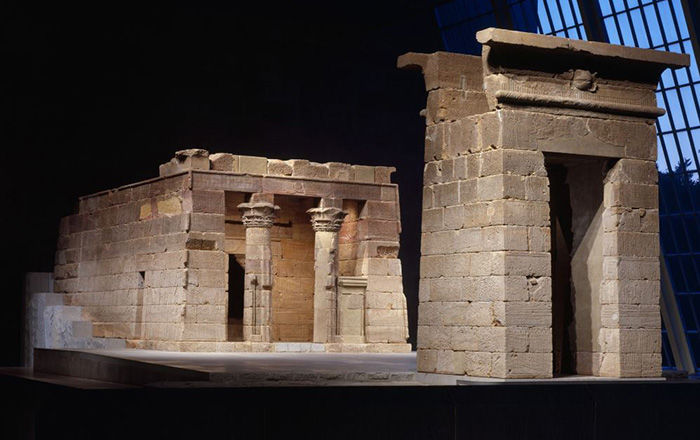The Temple of Dendur, originally situated on the banks of the Nile River in Egypt around 15 B.C.E., is a remarkable example of ancient Egyptian architecture and artistry. Built during the reign of Emperor Augustus, the temple was dedicated to the goddess Isis and her son Horus. This impressive structure not only reflects the architectural prowess of its time but also serves as a vital link to the rich cultural heritage of ancient Egypt.
Table of Contents
ToggleArchitectural Significance
The temple is notable for its unique architectural style, characterized by the use of sandstone and intricate carvings. These carvings depict various deities, ritual scenes, and aspects of daily life in ancient Egypt, showcasing the skilled craftsmanship of its builders. The design and construction techniques used in the Temple of Dendur exemplify the sophistication of ancient Egyptian architecture, with large stone blocks meticulously assembled to create an enduring monument.

Preservation Efforts
In the 1960s, the Temple of Dendur faced an imminent threat due to the construction of the Aswan High Dam, which led to the creation of Lake Nasser. The temple was at risk of submersion, prompting UNESCO to launch a campaign to save the temples of Nubia, which included the Temple of Dendur. In 1965, Egypt generously gifted the temple to the United States as a gesture of appreciation for American assistance in the preservation efforts. This act not only ensured the temple’s survival but also allowed it to be shared with a global audience.
The Temple in Modern Times
Today, the Temple of Dendur is beautifully displayed in the Metropolitan Museum of Art in New York City. Surrounded by a serene reflecting pool, the temple provides visitors with a stunning visual experience that invites them to connect with ancient Egyptian culture. The design of the exhibit enhances the temple’s historical significance, allowing for an immersive exploration of its context and meaning.

Conclusion
The Temple of Dendur stands as a testament to the artistry and spirituality of ancient Egypt. It acts as a bridge between ancient civilizations and contemporary audiences, sparking curiosity and appreciation for the rich history of Egypt. Through its preservation and display, the Temple of Dendur continues to inspire awe and admiration, inviting future generations to explore and learn about the complexities of ancient Egyptian culture.

